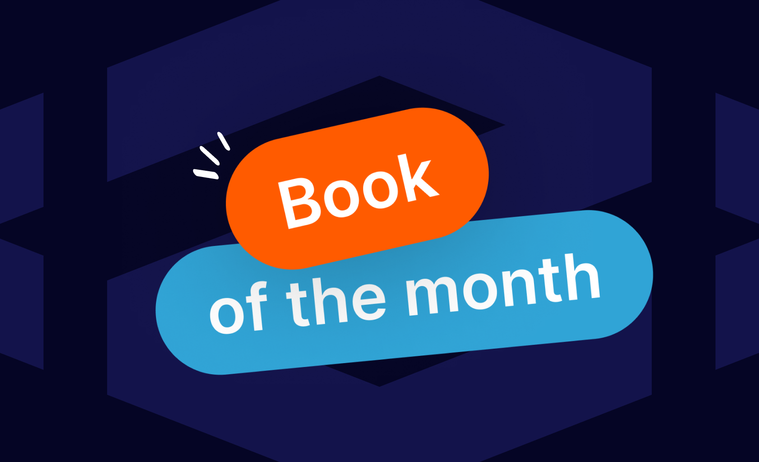Book Review: The Innovator's DNA by Clayton M. Christensen
Saving innovation from the grasp of chance and divine intervention, and turning it into something predictable, repeatable have been the passion of many a scientist, industrialist, business executive, and scholar since the First Industrial Revolution. The late Harvard professor Clayton M. Christensen has been one of the more prolific scholars in researching innovation. His jobs-to-be-done concept focusing on understanding customer needs and having that understanding guide innovation have been significant contributions to the field, inspiring other works as well.
The Innovator's DNA is a book on how to make disruptive thinking a core competency. Its methodology involves interviewing roughly 60 innovative entrepreneurs and senior executives in order to understand what makes them special and the common points they share. The authors found out that great innovators were exceptionally good at associational thinking, that is, "… making connections across seemingly unrelated questions, problems, or ideas…" to synthesize something new. This cognitive skill is nurtured by four behavioral skills: Questioning, observing, networking, and experimenting. Together, these five skills are dubbed the "discovery skills" throughout the book. The authors then compare innovators with non-innovators to verify their findings about skills that matter in effecting innovation. The book is organized around the four behavioral skills of questioning, observing, networking, and experimenting. It lays out how great innovators put these skills to use and how processes and philosophies built around these skills can pave the way for success.
While deciding which innovative entrepreneurs and executives to interview, the authors focus on a list of most innovative companies by Businessweek, which relies on a company's past performance to judge how innovative it is. The authors challenge this approach with a creative method they devised, called “innovative premium.” This metric refers to the part of a firm's market value that cannot be accounted for by its cash flows generated by its products or services. It helps explain why companies like Google, Apple, or Amazon are valued much more highly than their cash flows can justify, and why the valuations of more traditional companies like Toyota, Nokia or Sony are so modest in comparison despite their relatively high revenues. It turns out that investors appreciate the innovative approach of the first group of companies—these companies keep bringing more innovative products and services to the market that generate profits. The second group of companies, even if they are engaged in innovative activities, rarely bring to market products and services that will disrupt the market and spur growth.
However, the overall methodology of the book lacks the creativity that the authors exhibited in conceiving the innovative premium concept. To be fair, introducing scientific methodology into social sciences has always been tricky since social or psychological phenomena do not easily lend themselves to quantification. The same issue arises in The Innovator's DNA: How do we measure skills such as questioning, observing, networking, and experimenting? The authors conducted a survey to measure these skills, asking interviewees questions and eliciting answers on a scale where 1 corresponds to strongly disagree and 7 corresponds to strongly agree. The rest follows from this subjective analysis of a person's assessment of herself or a colleague or an associate.
Another issue with the book is the confirmation bias that kicks in from time to time. Authors incorporate data and stories that will support the point they are driving home and leave out parts that will contradict the main argument. The discovery skills examined in the book cannot be the only factors that make people like Jeff Bezos and Marc Benioff so successful. But for the sake of convenience, data fitting into the theoretical framework of the book are emphasized, while attributes that do not corroborate the theory are left out. The same tendency applies to the anecdotes narrated to emphasize why some select qualities are the key difference-makers, although the same anecdotes could have been interpreted in a way that emphasizes completely different qualities as well.
Despite some methodological problems that come with the territory and are hard to overcome in this specific genre, The Innovator's DNA is a powerful book that does a good job of dissecting disruptive innovation. It makes clear that innovative thinking should be the responsibility of everyone in an organization, not just the R&D department. A culture and philosophy of innovation have to permeate every corner of the organization if it is to stay ahead of the game and ensure sustainable growth in the future. The book's continuous focus on skills required to drive innovation can help entrepreneurs and executives fast-track a program of innovation in their respective companies. In addition to determining the skills key to associational thinking, the book wraps up with an appendix where readers can find advice on how they can hone their discovery skills. Still, for readers who would like to see a more scientific approach to innovation, Anthony W. Ulwick's Jobs to Be Done: Theory to Practice and its ODI (Outcome-Driven Innovation) framework would be a better choice.




 Please
fill out this field
Please
fill out this field









